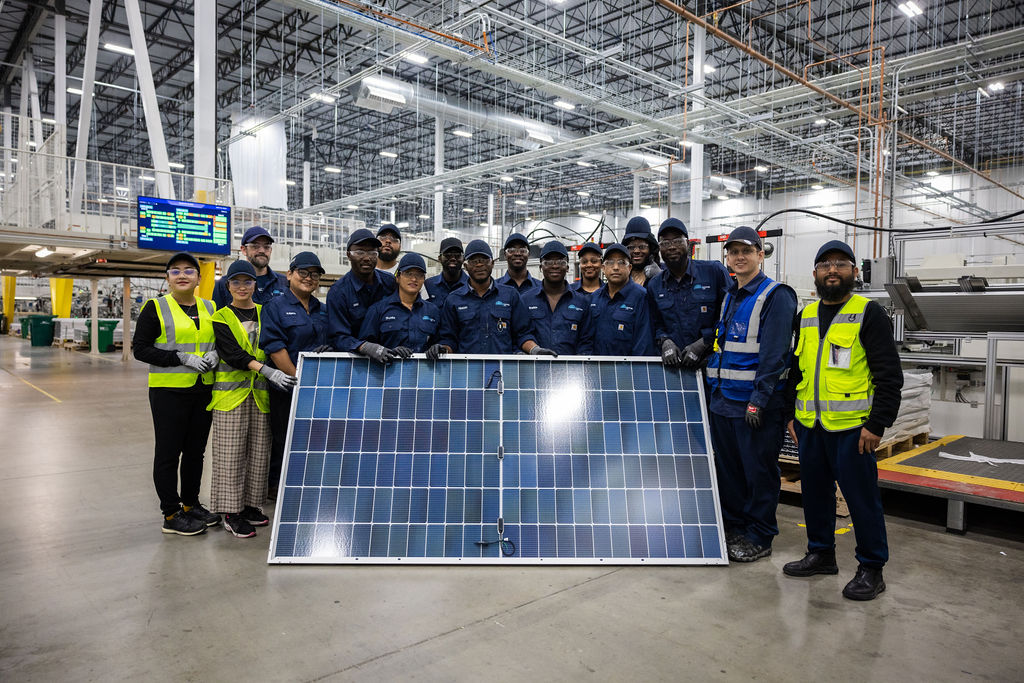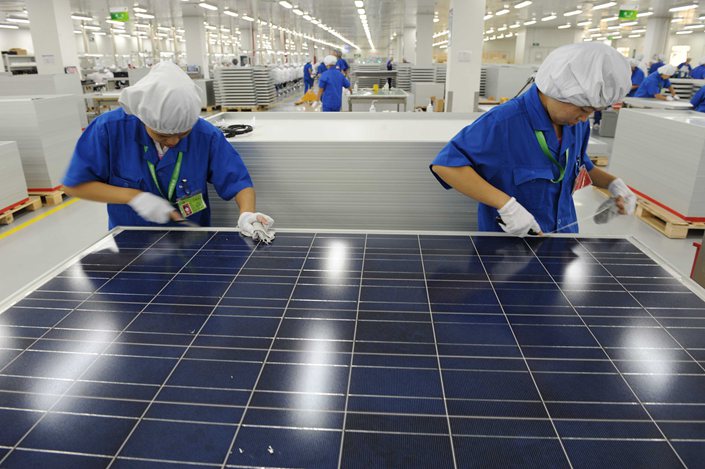Solar Power Systems Pennsylvania: Our Company Specializes In The Installation And Management Of Photovoltaic Energy Systems
History and Development of Photovoltaic Panel Business
The beginning of photovoltaic panel business can be traced back to the 1800s when Alexandre Edmond Becquerel found the photovoltaic effect. Would he have envisioned how his discovery would change the way we harness energy?
Early Starts

In 1954, Bell Labs established the very first useful photovoltaic cell. This marked a substantial turning point in the history of solar power. They were initially used to power area satellites, however who knew this was just the beginning?
Advancement and Growth
- In the 1970s, an energy crisis resulted in increased interest in renewable resource sources, consisting of solar power.
- By the 1990s, improvements in technology and increasing ecological awareness led to the growth of photovoltaic panel companies internationally.
A New Period
As we entered the 21st century, the solar market experienced an exponential development. The demand for clean and renewable resource caused a new period in the photovoltaic panel market.
Interesting Facts
- The world's first solar power station was integrated in 1982 in Hisperia, California.
- By 2019, solar power had actually become the world's fastest-growing source of power.
The journey of solar panel business has been exceptional, hasn't check here it? The future holds tremendous capacity, with constant developments leading the way for a sustainable future. Can we visualize a world powered completely by solar energy?
Moving Forward
Today, photovoltaic panel business continue to innovate, striving for more effective and cost-effective options. The advancement of solar energy has come a long method, and yet, the journey has actually just started.
The Core of Solar Panel Production
Ever wonder what goes into creating those glossy, sun-loving solar panels? The procedure is as remarkable as completion item (Affordable Solar Panels PA). High-purity silicon, the primary component in solar panels, undergoes numerous changes to ensure its performance and sturdiness
From Sand to Silicon
Crystalline silicon, the backbone of many solar panels, stems from basic sand. It's an interesting journey, isn't it? The sand undergoes a high-temperature reaction with carbon to form silicon. This isn't simply any silicon. The silicon used in photovoltaic panels is "solar-grade," with a pureness of 99.9999%. It's this pureness that allows the panels to successfully transform sunshine into power.
Ingot Development
As soon as the silicon is pure enough, it's time to form ingots. Picture a big, cylindrical block of solid silicon. How is this achieved? Through a process called Czochralski process, where the silicon is melted and then slowly recrystallized. It's a sluggish dance of science, resulting in a strong product that is practically as pure as the raw silicon itself.
Slicing into Wafers
The ingots are then sliced into wafer-thin pieces, like slicing a loaf of bread. Each slice is a possible solar battery, waiting to harness the power of the sun. Did you know that the silicon wafers are just about 200 micrometers thick? That's about half the thickness of a human hair! The procedure requires precision and perseverance, but the outcome is a set of wafers all set to be turned into solar cells.
Producing Solar Cells
With the wafer prepared, it's time for the magic to happen. The silicon wafer is 'doped' with other aspects like phosphorous and boron to produce an internal electrical field. It's this field that makes it possible for the conversion of sunlight into electrical power. Complex, isn't it?
Assembly and Quality Assurance
Solar cells are like puzzle pieces that come together to form a photovoltaic panel. The cells are soldered together in a grid-like pattern, then covered with a protective layer of glass. The final step includes rigorous quality assurance checks. After all, it's essential that every solar panel performs at its peak, wouldn't you concur?
Insider Tip
Always remember that even the most efficiently produced solar panel can lose effectiveness due to dirt and particles accumulation. Regular cleansing can substantially improve your panels' performance.
Comprehending the Ecological Effect of Photovoltaic Panel Business
Ever considered the environmental footprint of a solar panel company? Green innovation, such as solar, has changed our energy landscape, however what about the behind-the-scenes impact?
The Manufacturing Process: A Double-Edged Sword
The manufacturing procedure for photovoltaic panels requires a substantial amount of energy. This procedure, understood as 'em bodied energy', can be deemed a form of 'energy financial obligation'. It's a little like obtaining today's sunshine to power tomorrow's energy needs. Worry not, the energy payback time is frequently much shorter than you 'd think!
- The energy payback duration for photovoltaic panels is typically 1-4 years.
- After this duration, the energy produced is basically carbon-free.

Life After Decommission
And what occurs when a solar panel reaches completion of its life expectancy? Can it just be tossed into the garbage? No, that wouldn't be really green, now, would it?
A practical service is recycling. While solar panel recycling is still in its infancy, it holds a world of potential. Recycling not just keeps products out of garbage dumps but likewise reduces the need for new basic materials.
Accountable Sourcing: More Than A Buzzword
Where does the silicon originated from, you ask? Sadly, the industry's need for silicon and unusual minerals can result in devastating mining practices. Responsible sourcing is therefore imperative to decrease hazardous environmental impacts.
Minimized Carbon Emissions: The Bigger Photo
Let's not forget the larger picture: solar power significantly minimizes carbon emissions. As soon as installed, photovoltaic panels create clean, sustainable energy, balancing out their initial production footprint.
In other copyright, the environmental effect of photovoltaic panel companies is a complex concern. Nevertheless, with responsible practices, the pledge of a cleaner, greener future is well within our grasp.

Financial Efficiency and Market Share of Photovoltaic Panel Companies
Ever questioned why some photovoltaic panel business - Solar Panel Company beat others in the market? What sets them apart? The essential depend on their financial performance and market share
Financial Efficiency: A Crucial Sign
Financial performance plays a critical role in the success of any company. For solar panel business, it's no different. Strong financial efficiency makes it possible for these companies to invest in innovative technology, research, and advancement, consequently creating top quality, effective solar panels.
But how do they achieve this? With a focus on cost effectiveness and strategic investments. Companies that manage to decrease production expenses without jeopardizing on quality tend to fare much better in the market.
Market Share: A Measure of Success
Market share, on the other hand, is a direct reflection of a company's popularity amongst consumers. A high market share implies more house owners are selecting their photovoltaic panels over rivals.
What's the secret dish for getting a bigger market share? It comes down to consumer satisfaction and brand name credibility. Companies that focus on customer requirements and preserve a positive brand image are more most likely to capture a larger share of the market.
- Consumer Fulfillment: Solar panel companies that deliver trusted items and remarkable customer care tend to have greater client complete satisfaction rates.
- Brand name Credibility: A strong brand name track record is developed in time through consistent shipment of quality services and products.
Financial Efficiency and Market Share: The Symbiotic Relationship
Interestingly, the relationship between monetary performance and market share is not one-sided. They feed off each other. A strong financial efficiency can increase a business's market share, while a high market share can improve monetary performance.
As a solar panel business, balancing these two elements is essential for long-lasting success. A company that neglects either of them might find it tough to preserve its position in the competitive solar market.
The Takeaway
So, what does all this mean for you? Whether you're a property owner aiming to set up solar panels or an investor considering the solar market, understanding the financial efficiency and market share of solar panel business is essential. They are essential indicators of a company's health and capacity for future growth.